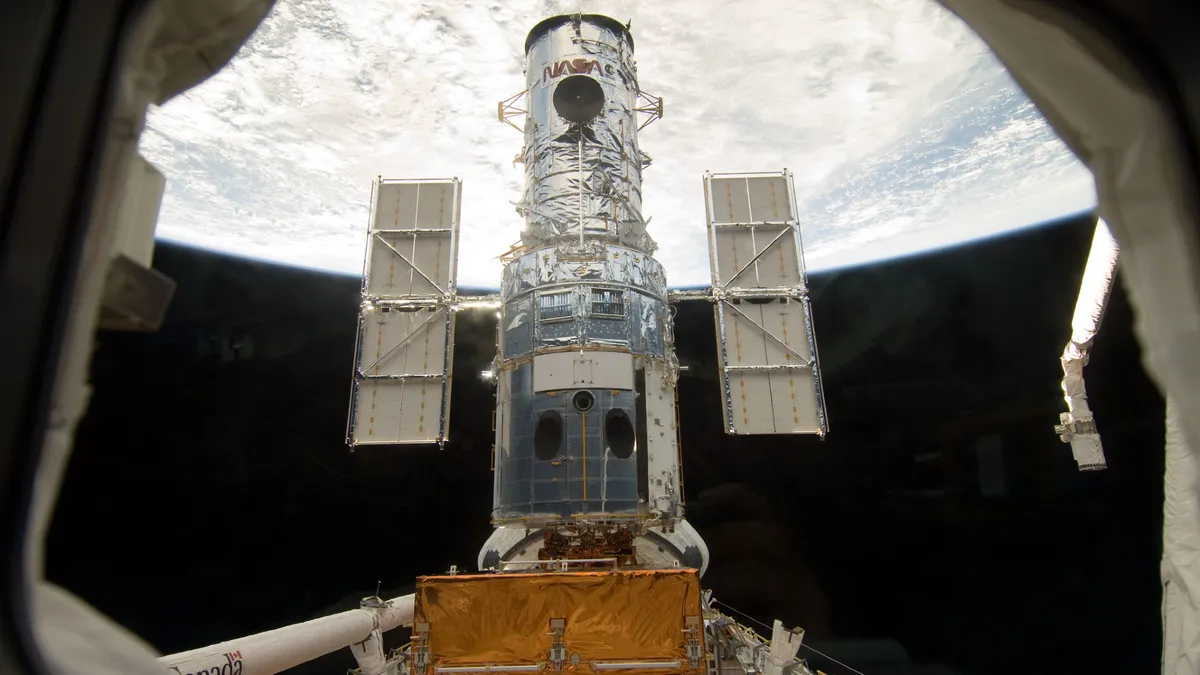
On his bookshelf, John Grunsfeld proudly displays a model of the Hubble Space Telescope alongside a model of a NASA space shuttle, which played a crucial role in delivering Hubble into orbit 35 years ago. Grunsfeld, a former NASA astronaut and the agency's former chief scientist, has been instrumental in ensuring that Hubble continues to function effectively. He participated in three of NASA's five servicing missions to the iconic telescope between 1999 and 2009, including the pivotal STS-125 mission on the shuttle Atlantis.
As NASA prepares to celebrate the 16th anniversary of the final servicing mission, Grunsfeld reflects on Hubble's remarkable longevity. “Thanks to all the missions leading up to and including our 2009 mission, Hubble remains a state-of-the-art observatory,” he stated in a recent interview. He hopes that Hubble can continue its groundbreaking work for another decade, emphasizing that its demise will not stem from a telescope failure but rather from its diminishing ability to maintain a stable position in the atmosphere.
However, Hubble's journey hasn’t always been smooth. When the telescope was launched on April 24, 1990, aboard the shuttle Discovery, astronomers eagerly anticipated its first images. Unfortunately, those much-awaited images turned out to be disappointingly blurry due to a flaw known as spherical aberration. This critical error meant that a dedicated mission to repair the optics was necessary. Grunsfeld, who at the time was working in X-ray and gamma-ray astronomy at the California Institute of Technology, viewed this setback as a potential catastrophe for NASA.
Fortunately, NASA had always planned for upgrades and repairs. Grunsfeld joined NASA as an astronaut in 1992, where he played a significant role in the STS-61 mission, the first repair mission for Hubble, which took place in 1993. This mission not only corrected Hubble’s vision with new optics but also replaced crucial gyroscopes, control units, and the telescope's solar arrays. “Because it was designed for extreme serviceability, we were able to save it,” Grunsfeld remarked.
Subsequent servicing missions further enhanced Hubble's capabilities, including the installation of the Wide Field Planetary Camera 3 during the 2009 STS-125 mission. Grunsfeld and fellow astronaut Andrew Feustel worked diligently to upgrade Hubble's instruments, which have allowed the telescope to continue producing exceptional scientific data, even 35 years after its launch. Each mission was a collaborative effort, involving not only the astronauts but also countless engineers and scientists on the ground.
The STS-125 mission nearly faced cancellation following the tragic Columbia shuttle disaster in 2003. However, Grunsfeld and NASA flight director Chuck Shaw developed a plan that ultimately led to the mission being approved in 2006. “The reason Hubble is still producing world-class science is because we were able to change out the instruments,” Grunsfeld explained. Despite no further servicing missions currently planned, there have been proposals for private missions to extend Hubble's life.
The scientific contributions of the Hubble Space Telescope have been monumental. It has played a vital role in proving the existence of black holes, refining our understanding of the universe's age, and allowing astronomers to peer back nearly to the moment of the Big Bang. Grunsfeld recalls the excitement of witnessing Hubble observe Comet Shoemaker-Levy 9 colliding with Jupiter in 1994, showcasing how Hubble has transformed our understanding of cosmic events.
Grunsfeld, who retired from NASA in 2016, expressed his satisfaction that Hubble continues to operate alongside the James Webb Space Telescope, which launched in December 2021. Together, these two observatories provide a powerful platform for astronomical discoveries. “The science case is even stronger for Hubble now, 35 years after launch,” Grunsfeld noted, highlighting the synergy between Hubble and Webb in unlocking the secrets of the universe.
Ultimately, Hubble has transcended its scientific purpose to become one of NASA's most effective ambassadors. “More than half of people on planet Earth have never known a world without the Hubble Space Telescope,” Grunsfeld stated, underscoring the telescope's significant impact on public fascination with space. Through its breathtaking images and groundbreaking discoveries, Hubble continues to inspire awe and curiosity about the universe.